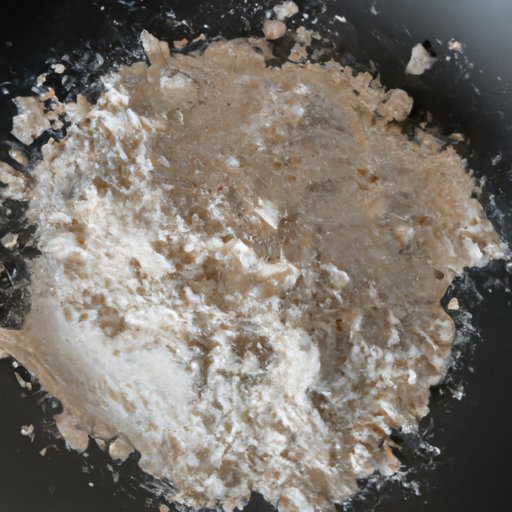
Introduction
If you like to bake, you know that certain ingredients can be difficult to find in your local grocery store. One such ingredient is self-rising flour. Many recipes call for this ingredient, and not having it can put a damper on your baking plans. However, creating your own self-rising flour at home is an easy and cost-effective solution. In this article, we’ll take a look at how to make self-rising flour from scratch, so you can always have it on hand and ready to use.
The Simplest Guide to Making Your Own Self-Rising Flour at Home
Self-rising flour is a versatile ingredient that is used in many baking recipes. Its key benefit is that it already contains a leavening agent, eliminating the need for adding baking powder or baking soda separately. Making your own self-rising flour is easy and can be done using three common kitchen ingredients.
DIY: How to Make Self-Rising Flour using 3 Common Kitchen Ingredients
To make self-rising flour, combine 1 cup of all-purpose flour with 1 1/2 teaspoons of baking powder and 1/4 teaspoon of salt. Mix well and store in an airtight container. This recipe yields 1 cup of self-rising flour.
Storing homemade self-rising flour is simple. Keep it in a cool, dark, and dry place. It will stay fresh for up to six months. You can also make larger batches by increasing the measurements accordingly.
Baking with Confidence: A Step-by-Step Guide to Making Self-Rising Flour Yourself
If you’re interested in making self-rising flour in larger quantities, try following this step-by-step guide:
- Gather your ingredients: all-purpose flour, baking powder, and salt.
- Measure out the ingredients according to the ratio of 1 cup of flour to 1 1/2 teaspoons of baking powder and 1/4 teaspoon of salt.
- Sift the ingredients together in a bowl using a whisk or sifter.
- Transfer the mixture to an airtight container and label it appropriately.
It is essential to store the self-rising flour in an airtight container to maintain its freshness.
Avoid making large batches of self-rising flour as baking powder can lose its potency over time. Instead, make small batches as needed.
No More Store-Bought Flour: Learn How to Make Your Own Self-Rising Flour in Just Minutes
Making self-rising flour at home is quick, easy, and convenient. It takes only a few minutes to make a small batch of it, which can last for up to six months. Having self-rising flour on hand allows you to bake with confidence without worrying about not having the right ingredients.
Not only is homemade self-rising flour cost-effective, but it’s also customizable. You can adjust the amount of salt and baking powder based on your preferences and dietary restrictions.
Creating the Perfect Rise: The Foolproof Method for Making Self-Rising Flour at Home
Self-rising flour contains a leavening agent that helps baked goods rise. The baking powder in the self-rising flour reacts with liquids in the recipe to create carbon dioxide, which causes the baked goods to rise.
To achieve the perfect rise when using homemade self-rising flour, follow these tips:
- Ensure the baking powder is fresh and not expired.
- Measure the ingredients correctly.
- Sift the dry ingredients together using a whisk or sifter to ensure even distribution.
- Add the dry ingredients to the wet ingredients and mix until just combined. Overmixing can lead to dense or tough baked goods.
Using homemade self-rising flour in your recipes will give your baked goods a delicious flavor, a light, and tender texture with the perfect rise.
From Scratch: How to Upgrade Your Baking by Making Your Own Self-Rising Flour
Making homemade self-rising flour can significantly enhance your baking. It allows for customization, flexibility, and control over the ingredients you use. You can adjust the recipe to suit your dietary needs or add flavor by using herbs or spices.
Homemade self-rising flour can be used in various recipes, including biscuits, pancake mix, muffins, cakes, and bread. So, try experimenting with different recipes to enhance your baking game.
Conclusion
Homemade self-rising flour isn’t rocket science, and making it at home can save you money, time, and ensure consistent quality. With the simple recipe, step-by-step guide, and useful tips discussed in this article, you can now make your very own self-rising flour and start baking with confidence. Try it out today and taste the difference!
Final Tip: Try adding fresh herbs, spices, or citrus zest to your self-rising flour mix for an extra flavor boost.





